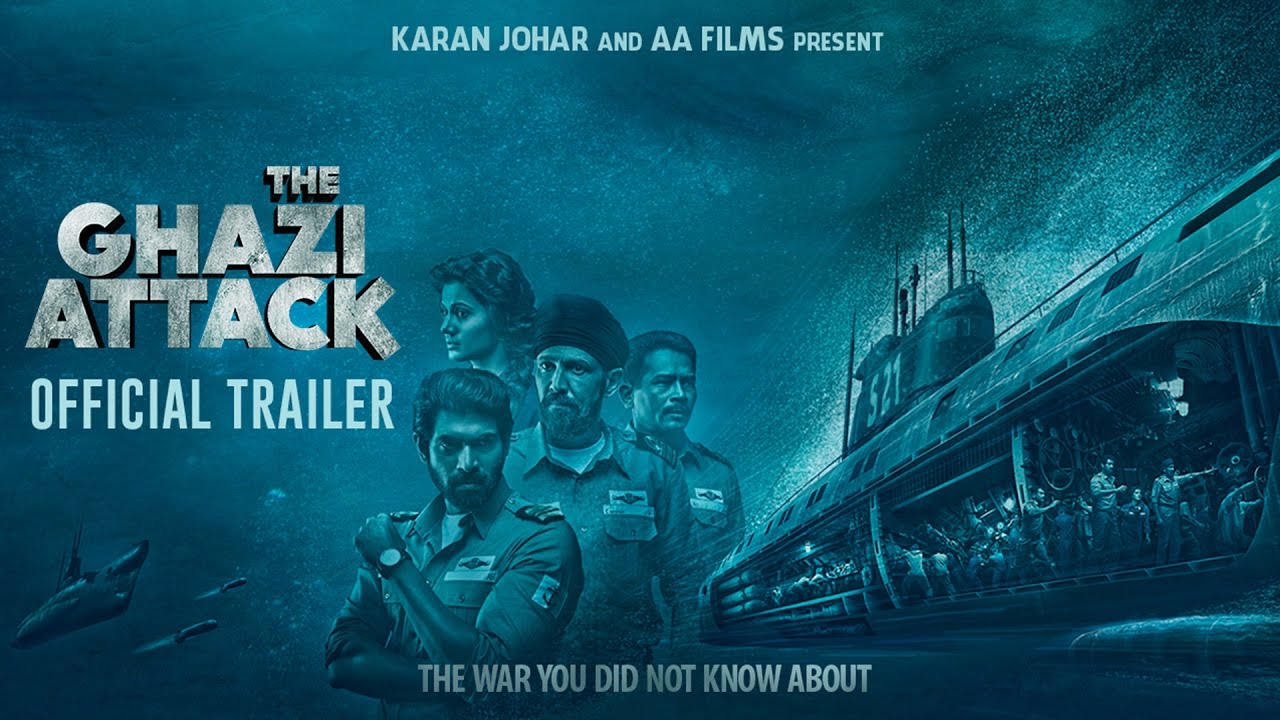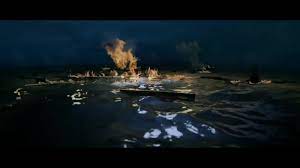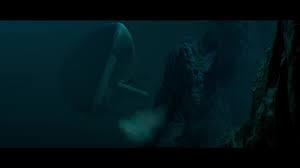🎬 The Ghazi Attack (2017)

The Ghazi Attack (2017) Movie Review: A Gripping Tale of Courage and Patriotism in the Sea
Introduction: A War Drama Based on True Events
The Ghazi Attack (2017) is an Indian war thriller directed by Sankalp Reddy. The film is inspired by real events during the 1971 India-Pakistan war, focusing on the lesser-known yet highly significant story of the Indian Navy’s daring operation to thwart the Pakistani submarine PNS Ghazi, which had been sent to destroy the Indian aircraft carrier INS Vikrant. Set against the backdrop of a high-stakes naval conflict, The Ghazi Attack brings to light a pivotal moment in history, blending action, suspense, and patriotism with a deep exploration of military strategy and human valor.
Starring Rana Daggubati, Taapsee Pannu, and Kay Kay Menon, the film recounts the tale of an intense underwater battle that took place in the Bay of Bengal, ultimately leading to the destruction of the Ghazi submarine. This review delves into the plot, performances, historical accuracy, technical aspects, and the themes presented in the film, highlighting why The Ghazi Attack is an engaging and emotional war film.
Plot Summary: The High-Stakes Battle for India’s Security
The Ghazi Attack is set during the 1971 India-Pakistan war, a pivotal period in South Asian history that ultimately led to the creation of Bangladesh. The film follows the events surrounding the sinking of the PNS Ghazi, a Pakistani submarine that was assigned the mission of destroying the Indian aircraft carrier INS Vikrant.
The story is told primarily from the perspective of the Indian Navy’s submarine INS Karanj, commanded by Captain Arjun Verma (played by Rana Daggubati). As the Indian Navy prepares for the impending conflict, Captain Verma and his crew are tasked with preventing the Ghazi from carrying out its deadly mission. The film alternates between the INS Karanj and the PNS Ghazi, offering insight into the lives of the men aboard both submarines, their strategies, and the tension that builds as they edge closer to confrontation.
On the Pakistani side, the PNS Ghazi is under the command of the ruthless Captain Khan (played by Kay Kay Menon), who is determined to destroy the INS Vikrant and gain a strategic advantage for Pakistan. However, unknown to him, the Indian Navy is already one step ahead, having detected the presence of the Ghazi in the region.
As the two submarines close in on each other, the film portrays the psychological and emotional toll of the war on the men involved. The battle takes place beneath the waves, in an unforgiving environment where one wrong move could mean death. The tension is palpable, and the film builds a sense of claustrophobia and urgency as the two submarines engage in a deadly game of cat and mouse, unaware that the enemy’s next move could be their last.
The film climaxes with the dramatic sinking of the Ghazi, a turning point that altered the course of the war and ensured that the INS Vikrant remained safe. The film concludes by highlighting the bravery and sacrifices of the Indian Navy’s submarine crew, whose actions were crucial in protecting the nation from the looming threat.
The Performances: Rana Daggubati, Kay Kay Menon, and Taapsee Pannu
The performances in The Ghazi Attack are one of its strongest elements. Rana Daggubati, known for his roles in Baahubali and Baahubali 2, brings a commanding presence to the role of Captain Arjun Verma. His portrayal of a focused, determined naval officer is both believable and captivating, making him the emotional anchor of the film. Daggubati’s nuanced performance adds depth to the character, showing not only his bravery but also his vulnerability as a leader who must make difficult decisions under pressure.
Kay Kay Menon, who plays the Pakistani submarine captain, Captain Khan, brings a sense of menace and intensity to his role. Menon is known for his ability to play complex antagonists, and his performance as the determined and ruthless Captain Khan is no exception. He captures the psychological pressure that the character is under, making him a worthy adversary to the Indian Navy’s crew. His portrayal of a man driven by duty and national pride, even at the cost of human life, adds an extra layer of tension to the narrative.
Taapsee Pannu’s role as the intelligence officer, Sandhya, is another highlight of the film. Though her role is relatively smaller compared to the male leads, Pannu does an excellent job of portraying a strong-willed and intelligent character who contributes significantly to the mission’s success. Her chemistry with Daggubati’s character adds a subtle emotional thread to the otherwise action-packed narrative, further grounding the film in human emotions.
The supporting cast, including actors like Atul Kulkarni, gives solid performances that contribute to the authenticity and emotional weight of the film. The camaraderie between the men aboard the submarines is palpable, and their interactions help to humanize the otherwise tense and high-stakes story.
Cinematography and Visual Effects: Capturing the Tension of Underwater Combat
One of the most impressive aspects of The Ghazi Attack is its cinematography, which effectively captures the isolation and tension of underwater combat. The filmmakers make good use of close-ups and tight shots to convey the claustrophobic environment of the submarines. The cinematography helps to emphasize the intensity of the situation, with the characters often confined in small spaces, forced to make life-or-death decisions with minimal room to maneuver.
The visual effects are particularly noteworthy, especially considering that the film is set in an underwater environment. The filmmakers use a combination of CGI and practical effects to depict the submarines’ movements and the action sequences, and the results are highly convincing. The underwater combat scenes are dynamic and engaging, with the filmmakers using clever techniques to simulate the tension of submarines engaging in silent warfare beneath the waves.
The realistic depiction of the INS Karanj and PNS Ghazi is another highlight of the film. The filmmakers paid great attention to detail in recreating the submarines, ensuring that the designs and technical aspects were historically accurate. The cinematography and special effects work in tandem to immerse the audience in the world of naval warfare during the 1971 India-Pakistan war.
Historical Accuracy: A Faithful Representation of the 1971 Naval Conflict
While The Ghazi Attack takes some creative liberties for dramatic effect, it remains largely faithful to the events that inspired it. The sinking of the PNS Ghazi remains one of the most important naval victories for the Indian Navy, and the film brings this story to the forefront, which has been relatively underrepresented in mainstream history.
The film accurately depicts the tense atmosphere of the 1971 India-Pakistan war and the strategic importance of naval operations in the conflict. It portrays the high-stakes nature of submarine warfare, the importance of intelligence gathering, and the psychological toll of war on those involved. While some aspects of the film, such as certain character interactions, are fictionalized for narrative purposes, the central event—the sinking of the Ghazi—is portrayed with historical accuracy.
The film also highlights the bravery and valor of the Indian Navy’s personnel, who played a crucial role in defending the nation during the war. It brings to light the untold stories of courage and sacrifice that occurred during the conflict, offering a new perspective on a crucial chapter in Indian military history.
Themes: Patriotism, Duty, and the Cost of War
At its core, The Ghazi Attack is a film about patriotism, duty, and the cost of war. The characters, whether Indian or Pakistani, are depicted as individuals driven by a sense of duty to their respective countries. The film explores the psychological and emotional toll that this sense of duty takes on the individuals involved, particularly the men aboard the submarines, who are tasked with making life-or-death decisions in the heat of battle.
The film also deals with themes of camaraderie and sacrifice. The crew members aboard both submarines share a bond with their comrades, and their willingness to sacrifice their lives for their country is a recurring theme throughout the narrative. The personal struggles and the pressures of war are central to the film, as the characters try to maintain their humanity in the face of an unforgiving conflict.
The film highlights the heroism of those involved in the operation while also examining the human cost of war. The underwater battle between the INS Karanj and the PNS Ghazi is not just a battle for national pride; it is a fight for survival, honor, and the protection of innocent lives.
Conclusion: A Gripping War Thriller with a Powerful Message
The Ghazi Attack (2017) is a gripping and emotional war thriller that brings to light a significant but often overlooked chapter of the 1971 India-Pakistan war. With strong performances, impressive cinematography, and a captivating portrayal of underwater combat, the film is a must-watch for fans of war films and historical dramas. The film successfully blends action, suspense, and human drama, creating a powerful narrative that celebrates bravery, sacrifice, and the cost of war.
Whether you’re interested in Indian military history, naval warfare, or simply enjoy films that explore the complexities of war, The Ghazi Attack offers a compelling story that will resonate long after the credits roll.











